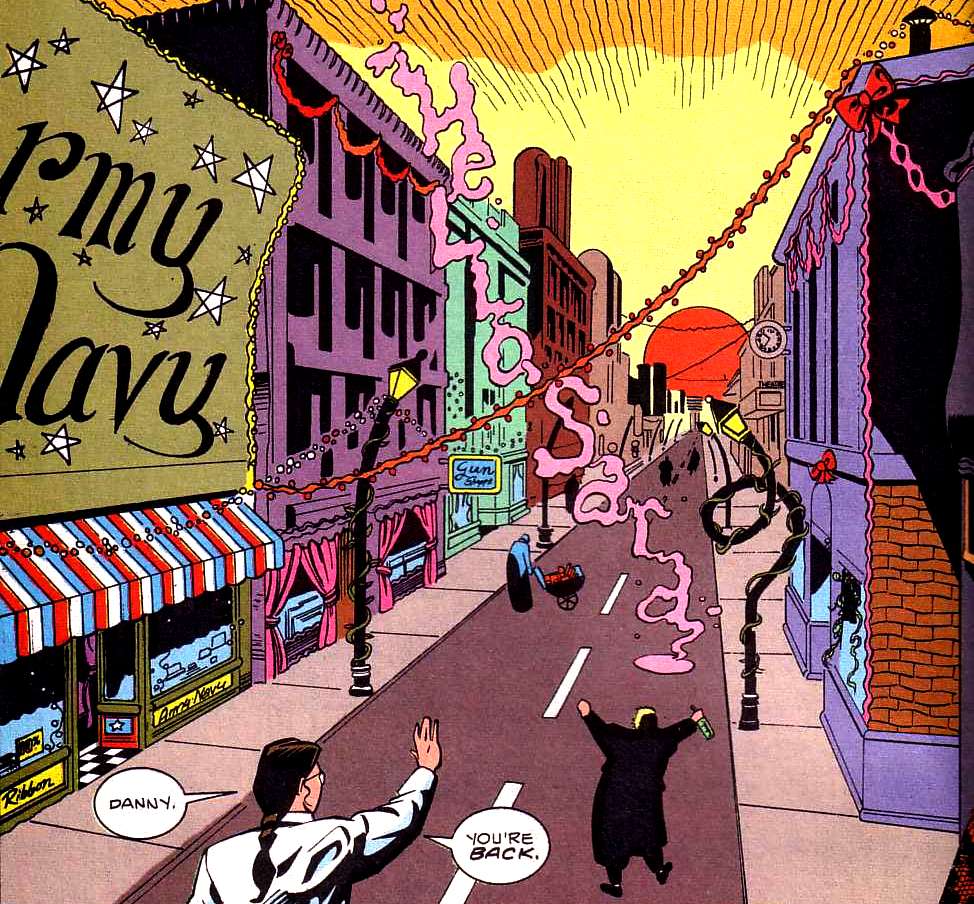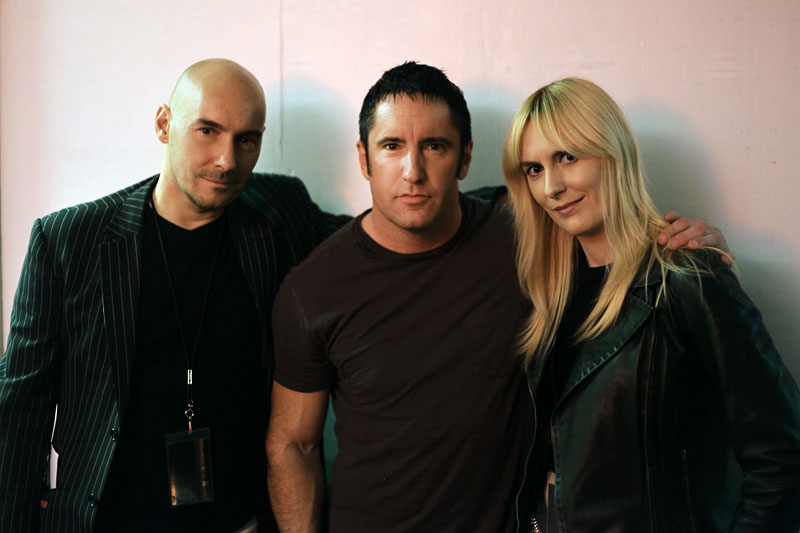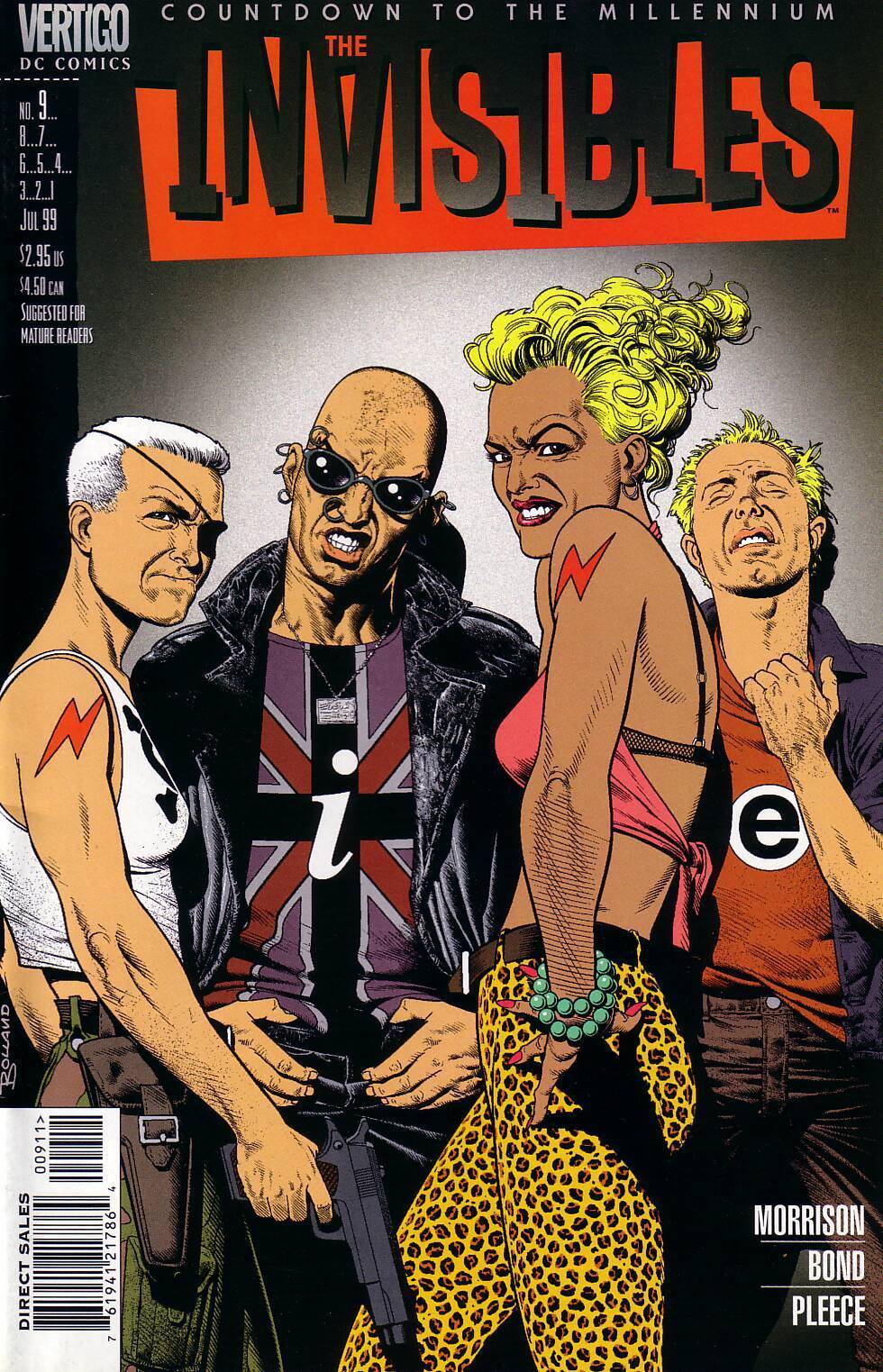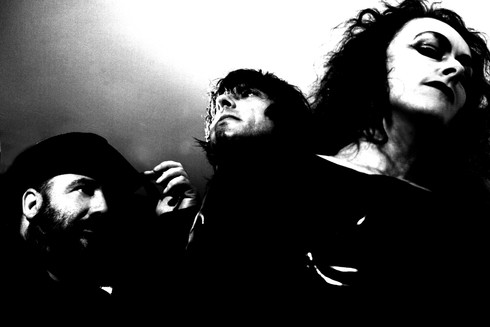Scottish author, playwright and television series producer Grant Morrison MBE has, in the last few weeks, come out as non-binary. In recent months, DC have confirmed The Flash will be genderfluid going forward, which didn’t exactly make a splash in the news. Grant Morrison being non-binary, though, is huge.
Grant Morrison is one of the most sought after and accomplished writers in the business. They have been active since the mid 80s, when they mostly wrote for Marvel UK, Doctor Who Magazine, 2000AD and British annuals for DC. After 1987’s Zenith
 for 2000AD, Morrison really caught the attention of DC Comics and landed the gig of an Animal Man ongoing. Morrison was quickly added to the ever growing list of talent colloquially known as the ‘British Invasion’, a group of British artists and writers that were being picked up by American publishers, started with Alan Moore on Swamp Thing. The ‘British Invasion’ featured hot talent such as the aforementioned Alan Moore and Grant Morrison, as well as Neil Gaiman, Brian Bolland, Dave Gibbons, Peter Mulligan, Alan Davis, Alan Grant, John Wagner, Cam Kennedy and into the 90s included Frank Quitely, Bryan Hitch, Steve Dillon, Barry Windsor-Smith, Mark Millar and many others.
for 2000AD, Morrison really caught the attention of DC Comics and landed the gig of an Animal Man ongoing. Morrison was quickly added to the ever growing list of talent colloquially known as the ‘British Invasion’, a group of British artists and writers that were being picked up by American publishers, started with Alan Moore on Swamp Thing. The ‘British Invasion’ featured hot talent such as the aforementioned Alan Moore and Grant Morrison, as well as Neil Gaiman, Brian Bolland, Dave Gibbons, Peter Mulligan, Alan Davis, Alan Grant, John Wagner, Cam Kennedy and into the 90s included Frank Quitely, Bryan Hitch, Steve Dillon, Barry Windsor-Smith, Mark Millar and many others.
Impressing DC Comics with Animal Man, Morrison was asked to take over writing duties on Doom Patrol in 1989, and possibly their most important work, the graphic novel, ‘Batman Arkham Asylum: A Serious House on Serious Earth’. ‘Arkham Asylum’ sold nearly 300,000 copies upon its initial release, sparking a renewed interest in Batman in comics, alongside the then recently released Tim Burton flick.
Into the 90s, Morrison followed up on ‘Arkham Asylum’ with a prequel of sorts, ‘Gothic’, in early issues of the Batman: Legends of the Dark Knight anthology series. Grant Morrison then revamped Kid Eternity for DC, all the while working on British  comics such as Dan Dare and the controversial ‘Bible John-A Forensic Meditation’. In 1993 DC Comics launched Vertigo, an exciting new imprint consisting of ‘mature themed’ DC content and creator-owned material. Under Vertigo, Morrison wrote a follow-up to their Doom Patrol run, ‘Flex Mentallo’, as well as creator owned short stories ‘Sebastian O’, ‘The Mystery Play’ and ‘Kill Your Boyfriend’, as well as the hugely popular abstract “mind fuck” ‘The Invisibles’ (which heavily influenced The Matrix). Millar relaunched JLA for a modern audience, and teamed up with fellow Scot writer Mark Millar for the maxiseries ‘JLA: Aztek’, a handful of issues of ‘Swamp Thing’ and ‘The Flash’.
comics such as Dan Dare and the controversial ‘Bible John-A Forensic Meditation’. In 1993 DC Comics launched Vertigo, an exciting new imprint consisting of ‘mature themed’ DC content and creator-owned material. Under Vertigo, Morrison wrote a follow-up to their Doom Patrol run, ‘Flex Mentallo’, as well as creator owned short stories ‘Sebastian O’, ‘The Mystery Play’ and ‘Kill Your Boyfriend’, as well as the hugely popular abstract “mind fuck” ‘The Invisibles’ (which heavily influenced The Matrix). Millar relaunched JLA for a modern audience, and teamed up with fellow Scot writer Mark Millar for the maxiseries ‘JLA: Aztek’, a handful of issues of ‘Swamp Thing’ and ‘The Flash’.
In the 2000s, Morrison moved to Marvel Comics after writing the graphic novel ‘JLA: Earth 2’. Under Marvel, Morrison wrote the hugely successful and critically acclaimed ‘New X-Men’, as well as ‘Marvel Boy’ and ‘Fantastic Four: 1234’. To this day, ‘New X-Men’ stands as one of the most influential runs on the X-Men franchise and has long been remembered for its critical changes and new characters brought to the franchise. It was during this time Morrison added to their Vertigo bibliography with ‘We3’, ‘The Filth’, Seaguy and Vimanarama. By the mid 2000s, Morrison had left Marvel vowing to “never work for them again”, and wrote the debut story in ‘JLA Classified’, and the 30 issue long series ‘Seven Soldiers’. Morrison co-wrote the follow up to Infinite Crisis, ’52’, and the 12 issue Eisner Award winning maxiseries ‘All Star Superman’. Grant Morrison and, by this point, frequent collaborator Frank Quitely, worked together on Robbie Williams’ album Intensive Care, designing the full packaging and art.

In the late 2000s and 2010s, Morrison their magnum opus, their seven year long Batman epic arc, interwoven with Morrison’s own ‘Final Crisis’. Morrison introduced Damian Wayne and made huge, long lasting changes to Batman and greater DC lore. Morrison returned to Vertigo for ‘Joe the Barbarian’, wrote an “analysis of superheroes and comics”, ‘Supergods: Our World in the Age of the Superhero’ and was the subject of the feature length documentary ‘Grant Morrison: Talking With Gods’. In 2011, Morrison was handpicked by DC editorial to lead the Superman character in the New 52 revamp, as well as finish their Batman run with ‘Batman: Inc’ and later, ‘Multiversity’. Morrison became the editor-in-chief of sci-fi and fantasy magazine ‘Heavy Metal’, and relaunched Green Lantern with Liam Sharp. More recently, Morrison co-created and wrote the Netflix original series ‘Happy!’ and wrote and produced the television series Brave New World.

Grant Morrison, Trent Reznor and Kristen Morrison, Rolling Stone Magazine
“We had ‘transsexual’ and ‘transvestite’ both of which sounded like [psychological] classifications rather than lifestyle choices! I didn’t want to
be labelled as medical aberration because that’s not how it felt, nor was it something cut-and-dried and done. I didn’t want to ‘transition’ or embody my ‘female’ side exclusively, so I had no idea where I fit in. Terms like ‘genderqueer’ and ‘non-binary’ only came into vogue in the mid-90s. So kids like me had very limited ways of describing our attraction to drag and sexual ambiguity. Nowadays there’s this whole new vocabulary, allowing kids to figure out exactly where they sit on the ‘colour wheel’ of gender and sexuality, so I think it’s okay to lose a few contentious words when you are creating new ones that offer a more finely-grained approach to experience.” – Grant Morrison
So yeah, Grant Morrison is a big deal. In an interview recently with Mondo2000, Morrison casually slipped out that they had been “non-binary, cross-dressing, ‘gender queer’ since [he] was ten years old”, and that terms for how they felt for a long time were “few and far between”. Any fans of Morrison’s incredibly impressive body of work will have long suspected this, and perhaps even already known. Morrison has long projected ‘Grant Morrison’ as a character throughout their comics, and projected sexual kinks into their comics. In the early days, Morrison appeared in their own written series Animal Man, where they interacted with the character at length in the final issue, after a slew of sporadic appearances. Although the term was unheard of in the 90s, Doom Patrol famously included a ‘gender queer’ character, Danny. Danny The Street was a literal street,  despite being a sentient character. Danny was a pun on drag queen Danny La Rue, utilised Polari language within his character and the characters that resides on Danny. Danny was originally described as a transvestite male, but was revamped for a more modern era in the Doom Patrol series (more about that here) where Danny was portrayed as genderqueer and described using “they/them” pronouns. In New X-Men, Morrison introduced Cyclops and Emma Frost as having a sexual relationship on a different plane of existence to the other characters, With ‘Invisibles’, Morrison used a sigil and requested readers take part in a spiritual “wankathon” to help with sales, making public their affinity for magik. Any reader of ‘The Invisibles’ will have surely seen the character Lord Fanny use similar abilities herself, reflecting the meta-language of Grant Morrison. Lord Fanny, of course, being a transgender woman. Morrison has teased sexual kinks and fetishes, from pegging to transvestitism and everything in between, throughout their comics. In some interviews, Grant expressed a deep sadness when remembering their younger years, with many to speculate the ‘suicidal teen’ in ‘All Star Superman’ was a projection, like many other characters. Now Morrison has come out as non-binary, and stated that this has been the case since they were ten years old, this certainly casts a new – yet unsurprising – light on things.
despite being a sentient character. Danny was a pun on drag queen Danny La Rue, utilised Polari language within his character and the characters that resides on Danny. Danny was originally described as a transvestite male, but was revamped for a more modern era in the Doom Patrol series (more about that here) where Danny was portrayed as genderqueer and described using “they/them” pronouns. In New X-Men, Morrison introduced Cyclops and Emma Frost as having a sexual relationship on a different plane of existence to the other characters, With ‘Invisibles’, Morrison used a sigil and requested readers take part in a spiritual “wankathon” to help with sales, making public their affinity for magik. Any reader of ‘The Invisibles’ will have surely seen the character Lord Fanny use similar abilities herself, reflecting the meta-language of Grant Morrison. Lord Fanny, of course, being a transgender woman. Morrison has teased sexual kinks and fetishes, from pegging to transvestitism and everything in between, throughout their comics. In some interviews, Grant expressed a deep sadness when remembering their younger years, with many to speculate the ‘suicidal teen’ in ‘All Star Superman’ was a projection, like many other characters. Now Morrison has come out as non-binary, and stated that this has been the case since they were ten years old, this certainly casts a new – yet unsurprising – light on things.
In many ways, Grant Morrison’s work led the way for transgender creators to be more comfortable in the comics industry, as well as a platform for LGBT+ characters and readers alike. Grant Morrison paved the way for Vita Ayala, and the prevalence of LGBT+ friendly stories and creators has in itself paved its way for Grant Morrison to come out as who they truly are. Fittingly meta, and typically Morrisonesque.
Recommended reading:
Batman by Grant Morrison volume 1
Supergods: Our World in the Age of the Superhero
Words: Graeme Small





